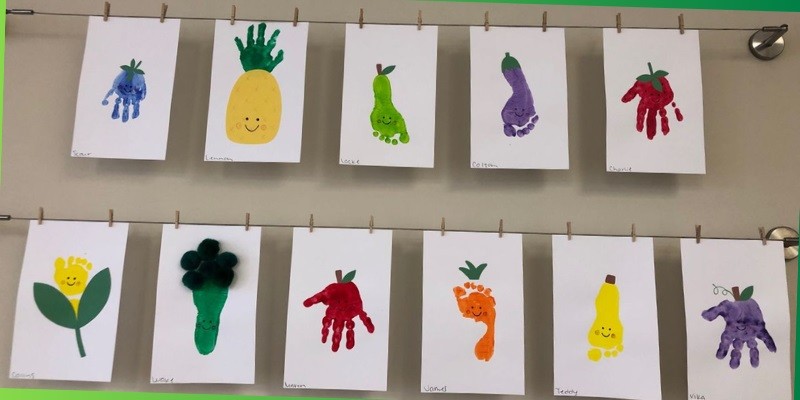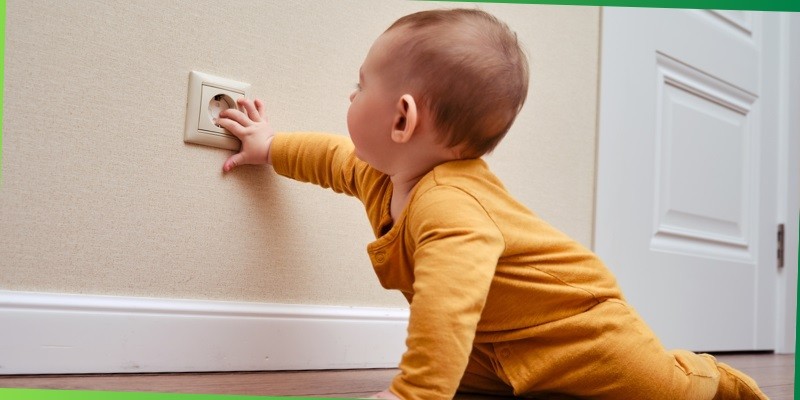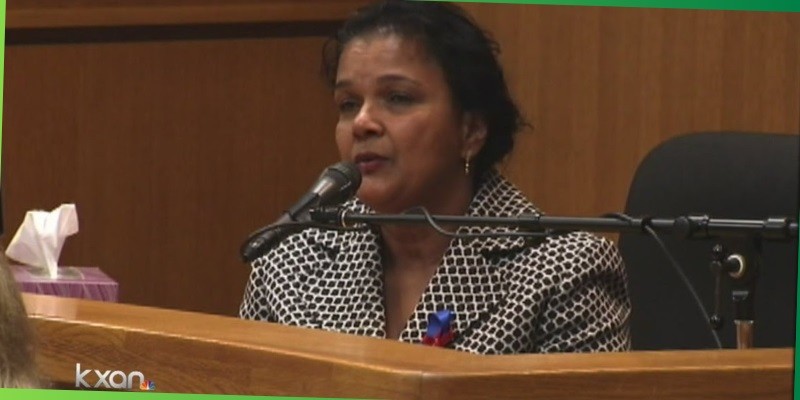Last Updated on June 6, 2023
Parallel parenting is a method of co-parenting that minimizes direct communication between parents and focuses on the children’s well-being. Parallel parenting is a way for separated or divorced parents to share parental responsibilities while minimizing the amount of direct communication between them.
This parenting method is characterized by parents following a set of guidelines to avoid direct contact while still being involved in their children’s lives. The philosophy behind parallel parenting is that both parents remain involved in their children’s lives and maintain a relationship with them, but they do so separately, without having to interact with each other frequently.
This method is particularly useful when parents have a high-conflict relationship and cannot communicate effectively without engaging in arguments. Parallel parenting has become increasingly popular in recent years as an alternative to traditional co-parenting in cases where traditional co-parenting is not feasible.

Credit: www.psychologytoday.com
Definition And Overview
Introduction To Parallel Parenting
When two parents can no longer cooperate and communicate effectively, parallel parenting may be an option in managing their child-rearing responsibilities. Parallel parenting aims to protect the child from parental conflict by providing a low contact arrangement between the two parents.
Defining Parallel Parenting
Parallel parenting is a structured approach to co-parenting, where the responsibility of each parent is to manage the child during their own scheduled time with minimal to no communication with the other parent. This form of parenting involves the following key features:
- A court-ordered parenting plan to ensure consistency and clear boundaries
- Minimal communication, including writing requests instead of verbal exchanges
- No involvement of the other parent in any decision-making or negotiations regarding the child’s upbringing
- Avoidance of conversation on disagreements between the parents, instead focusing on the child’s best interests
Differentiating It From Co-Parenting
Parallel parenting differs from co-parenting, another approach to shared parenting post-divorce, in several distinct ways. Here are some key differences:
- In parallel parenting, there is limited communication between parents, whereas co-parenting relies on open and ongoing communication between parents to make joint decisions for their children.
- In co-parenting, the parents work together towards common goals, while in parallel parenting, each parent makes independent choices and decisions for their children during their scheduled time.
- Parallel parenting is typically court-ordered and follows a structured plan to minimize conflict, whereas co-parenting can be flexible and may be discussed and agreed upon outside of court.
Overall, parallel parenting can be an alternative arrangement when traditional co-parenting is not feasible due to high levels of conflict or abuse. It allows both parents to have meaningful relationships with their children while minimizing the risks of conflict for the child’s well-being.
Reasons For Parallel Parenting
Parallel parenting is a type of parenting arrangement where each parent agrees to take responsibility for specific aspects of raising their children, without interfering with the other parent’s role. This approach is ideal for parents who have difficulty communicating or co-parenting effectively.
In this section, we will explore the reasons why parallel parenting might be the best option for some families.
Common Situations That Lead To Parallel Parenting
• high conflict divorce or separation: parallel parenting is often used as a way to reduce the level of conflict between parents during a divorce or separation. When parents are unable to communicate effectively, they may find it beneficial to have limited contact with one another.
• domestic violence: in cases where there is a history of domestic violence, parallel parenting can be an effective way to provide children with a sense of stability and safety. This approach allows each parent to have a role in the child’s life without having to come into direct contact with the abuser.
• different parenting styles: when parents have fundamentally different parenting styles, parallel parenting can be a way to reduce conflicts and disagreements. Each parent can choose to raise the children in their own way, without undermining the other parent’s choices.
Contrast Between Parallel Parenting And Co-Parenting
Co-parenting is an approach where both parents work together to raise their children, despite their differences. In contrast to parallel parenting, co-parents share decision-making responsibilities and are involved in each other’s lives. Here are some important differences between the two approaches:
• communication: in co-parenting, communication is key, and parents are encouraged to stay in regular contact with each other. In parallel parenting, communication is kept to a minimum, and only essential information is shared between parents.
• decision-making: in co-parenting, both parents share decision-making responsibilities and work together to make decisions that are in the best interests of their children. In parallel parenting, each parent makes decisions about their child’s life without interference from the other parent.
• time spent together: in co-parenting, parents spend time together with their children, and joint activities are encouraged. In parallel parenting, parents have limited contact with each other, and children may spend time with each parent separately.
Why Parallel Parenting Is The Best Option In Certain Cases
While co-parenting may be the ideal approach for many families, parallel parenting is a better option in some cases. Here’s why:
• reduced conflict: parallel parenting can reduce the level of conflict between parents, which can have a positive impact on children. When parents are able to interact in a limited way, there is less opportunity for disagreements and misunderstandings.
• clear boundaries: parallel parenting establishes clear boundaries for each parent’s role in their child’s life. This can be especially helpful when parents have fundamental differences in parenting styles or values.
• improved communication: in some cases, parallel parenting can actually improve communication between parents. When each parent has their own responsibilities, there is less pressure on them to communicate about every aspect of their child’s life.
Parallel parenting is an alternative approach to co-parenting that can work well for families who struggle to work together effectively. By establishing clear boundaries and reducing conflict, parallel parenting can allow each parent to play an active role in their child’s life while minimizing the negative impact of their differences.
How To Parallel Parent
Parallel parenting is an alternative approach that divorcing couples can use to co-parent their children following a separation or divorce. Unlike traditional co-parenting where the parents work together to raise their children, parallel parenting is a child-focused arrangement that reduces conflict and communication between the parents.
This approach may be useful for divorced couples with high levels of conflict or who cannot communicate effectively. In this blog post, we will discuss what parallel parenting is and how to parallel parent effectively.
Guidelines For Successful Parallel Parenting
Parallel parenting is a challenging arrangement that requires both parents to shift their focus to their children’s well-being and away from the other parent. Here are some key guidelines for successful parallel parenting:
- Prioritize your children: In parallel parenting, the children’s well-being is the central focus. Both parents should put their children’s needs and interests above their own.
- Establish clear boundaries: It is essential to establish clear boundaries between the two households, including schedules, rules, and expectations. This will ensure that each household operates independently of the other, minimizing conflict.
- Maintain consistency: Children benefit from consistency in their routines and expectations. Both parents should strive to maintain similar rules and routines to provide stability and predictability for their children.
- Avoid conflict: One of the primary benefits of parallel parenting is the reduction of conflict between parents. It is crucial to avoid conflict and communication that could escalate into arguments.
- Respect each other: While you may not agree with your co-parent’s choices, it is essential to respect their role in your children’s lives. Both parents should refrain from speaking negatively about the other parent in front of their children.
Legal Considerations And Documentation
Regardless of the parenting arrangement you choose, it is essential to have legal documentation to outline the specific terms of your custody agreement. Here are some key legal considerations for parallel parenting:
- Create a parenting plan: A parenting plan is a written agreement that outlines the terms of your custody arrangement, including schedules, decision-making, and communication.
- Document communication: It is essential to document all communication with your co-parent to avoid miscommunications, misunderstandings, and potential legal issues.
- Consider mediation: Mediation is a useful tool for parallel parents who need help resolving conflict or making decisions about their children.
Tips For Effective Communication
While parallel parenting reduces communication between co-parents, there will still be times when communication is necessary. Here are some tips for effective communication between parallel parents:
- Keep communication concise: Stick to the necessary information and avoid discussing personal issues or topics that could lead to conflict.
- Use technology: Text messages, email, and communication apps can be a useful tool for parallel parents to communicate without face-to-face interaction.
- Be respectful: Respectful communication is essential for successful parallel parenting. Avoid using negative or insulting language, and maintain a calm tone in all communication.
- Have a mediator: A mediator can help facilitate communication between parallel parents, particularly if there is a significant issue or conflict that needs to be resolved.
Parallel parenting requires both parents to work together to prioritize their children’s well-being, establish clear boundaries, and maintain consistency. Legal documentation and effective communication are also critical for successful parallel parenting. With patience, empathy, and focus on the children’s best interests, parallel parenting can be a successful co-parenting arrangement for divorced couples.
Improved Co-Parenting Relationship
Parallel parenting is a co-parenting approach that involves minimal communication and low contact between parents to effectively raise children in two separate households. It’s a constructive solution for couples who cannot cooperate after separation or divorce without excessive conflict. This method allows both co-parents to care for their children without interference from each other while reducing their involvement in each other’s life.
In this section, we’ll discuss how parallel parenting reduces conflict and the benefits it offers to children.
How Parallel Parenting Reduces Conflict
Parallel parenting promotes a peaceful and workable environment as it significantly reduces conflict between ex-partners. Some of the ways it does this include:
- Low contact: As mentioned earlier, parallel parenting involves minimal communication between parents to avoid conflicts. This means that communication between the parents only happens when it is necessary, such as arranging pick-ups and drop-offs or discussing medical appointments and school events.
- Clear terms: Parallel parenting involves establishing clear-cut terms and guidelines for co-parents to follow. Setting clear rules, boundaries, and guidelines can reduce any ambiguity or misunderstandings, thereby avoiding conflicts and disagreements, especially in times of decision making.
- Respectful communication: Parallel parenting requires co-parents to communicate respectfully and civilly when necessary. This means conversations are less likely to escalate into arguments or result in emotions boiling over.
Benefits To The Children
Parallel parenting provides significant benefits to children, including:
- Reduced exposure to conflict: When parents experience conflict, children suffer, and this often affects their well-being. The low contact approach and effective communication between co-parents in parallel parenting reduce the exposure of children to ongoing conflict between separated parents.
- Consistency: Consistency is essential for children’s emotional well-being. Parallel parenting ensures that children get the consistency of what to expect in each of their homes’ rules and routines without the interference of the other parent. Children’s schedules and routines can stay consistent and stable with a solid parenting plan structure.
- Better relationships with parents: Children should have positive relationships with both parents, even after separation or divorce. By minimizing conflict, parallel parenting creates a peaceful and stable environment that enables children to build stronger and more positive relationships with their parents than they would otherwise.
- Better outcome: Parallel parenting genuinely impacts the well-being and outcome of the children’s futures. Under a parallel parenting plan, children are likely to have higher self-esteem, better academic achievement, and improved mental health.
Parallel parenting is a beneficial approach for separated or divorced parents to raise their children. Decreasing the likelihood of conflict has enormous benefits for both parents and, more importantly, their children. Parallel parenting allows the children to grow in a peaceful environment with two consistent and stable homes.
This approach enables children to foster healthy relationships with both parents, leading to excellent outcomes in their lives.
Positive Impact On Children
Parallel parenting is an arrangement that provides a solution for parents who find it hard to co-parent their children. It is an option when couples have gone through a contentious divorce or bitter separation. In such scenarios, parallel parenting allows each parent to have an independent relationship with their children, minimizing conflict between them.
The Benefits Of Parallel Parenting For Children:
- Children in parallel parenting situations are less likely to get caught in the middle of their parents’ arguments.
- Kids can experience a sense of stability despite problems between their parents.
- Children can enjoy quality time with both parents without being forced into situations where the parents need to interact.
- Parallel parenting arrangements ensure that both parents contribute to decision-making and parenting responsibilities, avoiding a complete loss of contact for one parent.
How Parallel Parenting Can Positively Impact Long-Term Relationships With Children:
Parallel parenting promotes healthier parent-child relationships. This parenting style allows both parents to participate in their child’s life, leading to a more positive and stable relationship. The parallel parenting method enables parents to put aside their differences and work towards what is best for their children.
In the long run, children raised through parallel parenting grow up knowing that both parents are present in their lives. This knowledge gives them an allowance to avoid negative emotions towards one parent due to the shortcomings of the other.
It is reassuring and encourages children to maintain compassionate relationships with both parents.
Differences Between Parallel Parenting And Joint Custody For The Child:
Parallel parenting is different from joint custody since parallel parenting aims to minimize interactions between the parents and promote peace. Joint custody involves both parents sharing equal parenting responsibilities, and they must collaborate to achieve the best for their child.
The nature of joint custody requires frequent communication between parents, which could interfere with the child’s wellbeing. On the other hand, parallel parenting minimizes interaction between divorcing parents, as each parent has the freedom to do things their own way.
Parallel parenting encourages independent relationships between children and both parents. It is a suitable method for parents who have had a tumultuous relationship since it significantly reduces conflict. Children’s needs are considered a priority, and their best interests come before those of the parents.
Parallel parenting is an option where children’s needs come first. Although it may not be suitable for everyone, it offers a sense of stability to children during challenging situations. By making parenting easier and reducing stress, parents can put more focus on the upbringing of their children, providing them with the best environment to grow.
Increased Parental Involvement
How Parallel Parenting Allows For Equal Involvement From Both Parents
Parallel parenting is a co-parenting arrangement where separated or divorced parents each take responsibility for childcare duties during their time with their child. This approach allows for both parents to remain involved in their child’s life without having to consult each other on every decision.
Here are some key points on how parallel parenting allows for equal involvement from both parents:
- Parents make their own decisions: In parallel parenting, each parent has the freedom to make decisions about their child’s daily routine, medical care, education, and religious upbringing during their parenting time without consulting the other parent.
- Minimal communication: In parallel parenting, communication between parents is kept to a minimum, with contact only needed for emergencies or scheduling changes. This allows for both parents to avoid conflicts and maintain their independence.
- Structured parenting plan: A detailed parenting plan is followed in parallel parenting to ensure both parents are involved and meet their responsibilities.
The Importance Of Both Parents In A Child’S Life
Both parents play a vital role in a child’s life, even after divorce or separation. Here are some points that highlight the importance of both parents in a child’s life:
- Positive role models: Parents serve as role models to their children. By being actively involved in their lives, parents can instill positive values, attitudes, and behaviors.
- Emotional support: Children who have a relationship with both parents benefit from increased emotional support, which helps them cope with life’s challenges.
- Different parenting styles: Both parents bring unique parenting styles to the table, which can benefit their child and helps them to develop different skills and abilities.
- Consistent involvement: Consistent involvement by both parents, even after a divorce, can provide stability and a sense of security for a child.
Positive Outcomes For Children When Both Parents Are Actively Involved
When both parents stay actively involved in their child’s life, it can lead to positive outcomes for the child. Here are some points that highlight the benefits of active parental involvement:
- Improved well-being: Children who have a positive relationship with both parents tend to have an overall improved sense of well-being and are less likely to experience behavior problems, anxiety, or depression.
- Better academic performance: Active parental involvement has been linked to higher academic achievement, higher grades, and lower dropout rates.
- Better social skills: Children who have a good relationship with both parents tend to have better social skills, higher self-esteem, and better communication skills.
- Positive future relationships: Children who grow up with two supportive parents are more likely to have positive future relationships, since they have positive role models for interaction.
With parallel parenting, both parents can remain actively involved in their child’s life, regardless of their relationship with each other, and can contribute to their child’s overall well-being and future success. It is important for both parents to prioritize their child’s needs, maintain communication as needed, and create a structured plan that works for everyone.
Maintaining Consistency
What Is Parallel Parenting?
Parallel parenting is an arrangement which permits both parents to remain involved in their child’s life while giving each party their own complete space. It is a sort of parenting approach used when co-parenting does not seem to be effective.
Challenges Associated With Parallel Parenting
Although this type of parenting can be beneficial, there are some potential challenges that come along with parallel parenting. Here are some of the challenges to be aware of:
- Communication problems between parents
- Differences in discipline techniques
- Trust and control issues
- Potential for high tension or conflict
- Limitations on flexibility and decision-making
Maintaining consistency is one of the most critical aspects of parallel parenting. Here’s how parents can foster consistency:
- Communication: Strong communication decreases areas of confusion and provides a stable structure.
- Setting boundaries: Each parent must adhere to given boundaries and limits.
- Following a schedule: Both parents must adhere to a consistent schedule that works for both parties.
- Co-parenting apps: There are co-parenting apps available that can provide a platform for joint decision-making.
Overcoming Common Obstacles In Parallel Parenting
Here are some of the most common obstacles of parallel parenting and how to overcome them:
- Letting go of negativity: Letting go of negative emotions can be tough, but focus on the bigger picture, your child’s well-being.
- Accepting imperfection: Recognize that neither parent is perfect, and there will be times when the other parent deviates from expectations.
- Creating a solid plan: Establishing a sound parallel parenting plan with the help of a skilled mediator can make a significant difference.
- Co-parenting support groups: Joining a co-parenting support group can provide valuable support, knowledge, and advice.
Parallel parenting is not always easy, but it can effectively provide both parents with space while still fostering involvement in their child’s upbringing. By establishing boundaries, following a comprehensive plan, and receiving support, it can be successful.
Effect Of Parental Conflict
Parallel parenting is a term used to describe a co-parenting approach where each parent is responsible for making parenting decisions while minimizing communication between them. This approach is often used in high-conflict situations where communication is challenging, and the parents are unable to communicate effectively.
How Parental Conflict Impacts Children In Parallel Parenting:
Parental conflict can have devastating effects on children, particularly when they are caught in the middle of their parents’ feud. Here are some ways conflict can impact children in parallel parenting:
- Children may experience stress and anxiety due to the ongoing conflict between their parents.
- They may develop behavioral issues such as aggression, disobedience, and withdrawal from family and friends.
- Children may struggle with low self-esteem and difficulty in forming attachments to others, leading to problems as they develop.
- They may have academic problems due to their inability to concentrate and focus in school.
How To Limit The Negative Effects Of Parental Conflict:
While it’s essential to minimize conflict between parents, it is inevitable in all co-parenting situations. Here are some ways parents can limit the negative effects of parental conflict:
- Parents should prioritize their children’s needs by keeping lines of communication open, even if it is limited.
- They should set aside their own anger and resentment toward each other and focus on positive co-parenting strategies.
- It’s crucial to establish clear boundaries and expectations related to parenting time, decision-making, and communication.
- Parents should consider seeking the help of family law professionals or a family mediator to help them navigate their co-parenting journey.
Tools And Methods To Avoid Conflict:
One of the key aspects of parallel parenting is avoiding conflict as much as possible. Here are some tools and methods parents can use to minimize conflict:
- Using a co-parenting communication app that allows for stress-free messaging and helps keep a record of all communication between the parents.
- Developing a parenting plan that outlines rules and guidelines agreed upon by both parents.
- Parents should avoid discussing personal topics and limit conversations to those related to their children.
- They should also respect each other’s privacy and refrain from using technology to monitor each other.
Parallel parenting is an effective co-parenting strategy for high-conflict situations, but parents must understand how parental conflict can affect their children. By limiting conflict, establishing boundaries and expectations, and using tools to avoid disagreements, parents can minimize the negative impact of parental conflict on their children.
Frequently Asked Questions For What Is Parallel Parenting?
What Is Parallel Parenting?
Parallel parenting is a form of co-parenting where parents disengage from each other and make independent decisions for their children.
When Is Parallel Parenting A Good Option?
Parallel parenting is a good option for high conflict custody cases where parents cannot co-parent effectively.
How Does Parallel Parenting Benefit Children?
Parallel parenting can benefit children by reducing exposure to parental conflict and providing a more stable environment.
What Are The Characteristics Of Successful Parallel Parenting?
Successful parallel parenting involves clear communication, respect for each other’s parenting styles, and prioritization of children’s needs.
Can Parallel Parenting Be A Long-Term Arrangement?
Yes, parallel parenting can be a long-term arrangement, especially when parents are unable to effectively co-parent but still want to remain involved in their children’s lives.
Conclusion
Parallel parenting is undoubtedly a useful approach to co-parenting when traditional co-parenting does not work. It enables both parents to take care of their children without the need for direct communication. Parallel parenting may seem tough, but it is all about protecting the child by minimizing their exposure to parental conflict.
When co-parenting is not suitable, whether due to high conflict or other issues, parallel parenting can serve as the next best option. Effective parallel parenting requires a lot of planning, patience, and cooperation. It’s a solution to make sure that your child has the support that they need without exposing them to any conflicts between their parents.
So if you find yourself in a situation where co-parenting isn’t working for you, or if it’s creating a hostile environment for your children, parallel parenting might just be the solution.







